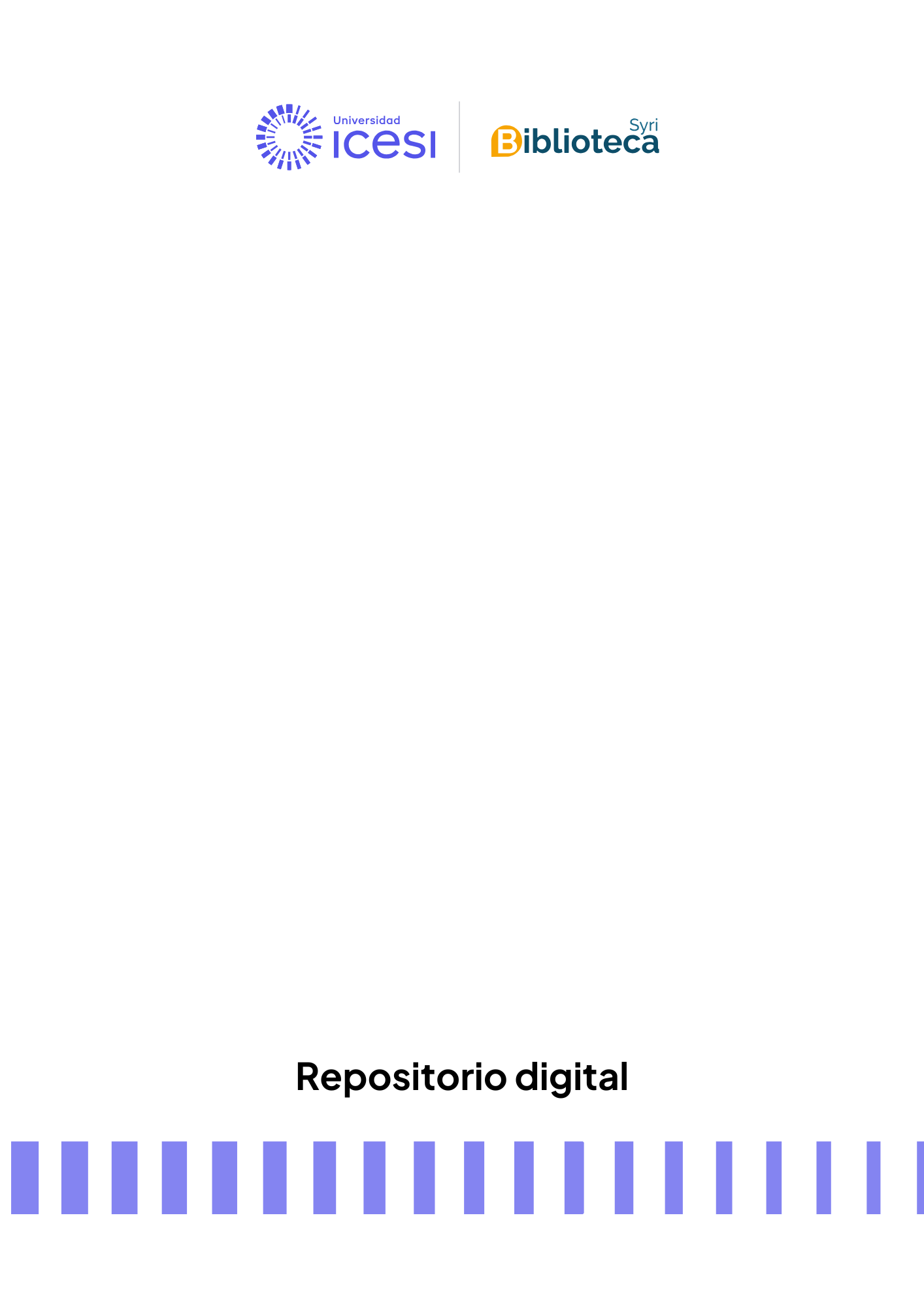Sistemas y Telemática No. 3
URI permanente para esta colecciónhttp://hdl.handle.net/10906/365
Examinar
Envíos recientes
Ítem Sistemas y Telemática - No. 3 - Enero/Junio 2004(Universidad Icesi, 2004-01-01) Universidad IcesiEl tema de los indicadores de gestión se ha venido convirtiendo en prioritario dentro del ámbito de las organizaciones. Las aproximaciones al tema van desde lo meramente instrumental hasta la inclusión de los indicadores como parte del tema estratégico. Una de las metodologías que liga los indicadores con el ejercicio estratégico es la de Cuadro de Mando Integral (Balanced Scorecard) que sugiere enlazar los indicadores con los objetivos estratégicos a través de relaciones causales. En este artículo se muestra, a través de un modelo de ejemplo, la potencialidad de la Dinámica de Sistemas como herramienta para establecer las relaciones causales entre indicadores, verificar la validez de las hipótesis subyacetes a dichas relaciones y mostrar la necesidad de establecer transacciones entre el logro de los objetivos asociados a diferentes indicadores.Ítem Aplicación práctica del diseño de pruebas de software a nivel de programación(Universidad Icesi, 2006-07-28) Guzmán Cortés, Oscar HernandoTests must be present in all software life cycle phases, including requirements, analysis and design, programming, implementation and maintenance. This article presents the design and execution scheme of software test, specifically centered in programming tests defined to Software Development department of Icesi University. The requirements tests scheme is shown in a basic form. The schemes of analysis and design tests, implementations tests, and maintenance tests, are not shown because they aren’t totally defined.Ítem Estructura básica del proceso unificado de desarrollo de software(Universidad Icesi, 2006-07-28) Castro Gil, Robin AlbertoFor a long time, the traditional waterfall model has been used in software development. Over this time it has demonstrated that it does not reflect properly the inherent complexity of the software development process. The problems that this model presents stem from its structure: a sequence of large stages that have complete documentation as a milestone before being able to continue to the following stage. To solve this problem it is neccesary to use iterative and incremental methods that together with other key practices, such as risk management and the adaptable planning, provide a natural guidance to the software development process. IBM’s RUP is taken into special consideration. RUP is based on the spiral model and organizes iterations into stages and phases in order to obtain a more solid, clear, and adjustable structure of the particular needs of every organization. This article aims to describe iterative development iterative in general and the advantages that its use offers in software develoment processes.Ítem Seguridad en redes inalámbricas 802.11(Universidad Icesi, 2006-07-28) Madrid Molina, Juan ManuelLack of security in wireless LANs is a problem which has not been correctly assessed by network managers and people in charge of information, in spite of its seriousness. This article presents the existing technologies for heightening the security level in 802.11 wireless LANs, among with their advantages, disadvantages and application scenarios.Ítem Realimentación como paradigma de integración conceptual en educación(Universidad Icesi, 2006-07-28) Vega Barvo, Daniel MartínFeedback is a key phenomena and concept in Control theory and systemic thinking. Its importance and historic evolution in different areas of endeavor are analized.Ítem Herramienta para el cálculo de invariantes topológicos(Universidad Icesi, 2006-07-28) Pérez Escobar, Aura Lucía; Valdés Duque, Javier Guillermo; Bedoya Giraldo, Juan PabloIn this article there is a description of the process that yielded a software tool which was designed with the purpose of calculating four specific topological invariants, among which we count the Betti numbers, the dimension of the complex, the q-array and the Euler- Poincaré characteristic. The meaning of all the obtained results is viewed from Professor Luis Eduardo Múnera’s perspective, which in turn proposes a formal mathematical definition of cohesion and coupling, two important criteria when evaluating modularity of a software design. The article also describes the tool itself, its functionality and the importance it has to the professor’s project. In order to portrait a full comprehensible description of both the process and the tool, an historical framework is established through a brief review of the evolution of the different ideas and concepts behind the project, and the way and pace with which these were assimilated by the student team that were appointed to the task.Ítem Una aproximación a los indicadores de gestión a través de la dinámica de sistemas(Universidad Icesi, 2006-07-28) Arenas Guerrero, Fernando AntonioPerformance measures have become a main topic within the organizational environment. Approaches to this subject have been going from the merely operational to the inclusion of performance measures as part of strategic planning, as in the Balanced Scorecard approach, where measures are linked with strategic objectives through causal relationships. This article intends to show, by means of an example model, the potential of system dynamics for establishing causal relationships between measures, verifying the validity of hypotheses implicit in these relationships, and showing the need for trade- offs between different objectives.

